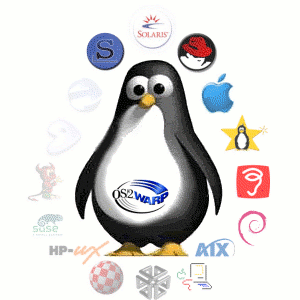Linux
Linux environments consist of a Linux kernel, core POSIX-compliant software, user software, and nearly always a GUI desktop working environment for the user. The core and user software are usually from GNU and the desktop working environments are from GNU-related projects, the most commonly used of which are Gnome and KDE. See the Wikipedia article on Linux in general:
Linux is available for every common hardware environment, and forms the foundation for commercial offerings such as Apple's OS-X for the Macintosh and Andrdoid for smartphones and tablets.
POSIX
POSIX ("Portable Operating System Interface") is a family of IEEE standards standardizing UNIX-like environments. See the Wikipedia article on POSIX:
A POSIX-compliant environmnet is obtained by implementing the standard UNIX utilities as system commands and providing a user shell such as bash for command console windows. POSIX commands, bash and other shells are available from GNU and Sourceforge.
User Desktops
The user desktop is the graphical interface that presents itself for the user after Linux boots. It consists of a background, a taskbar that includes a task launcher and activity icons, and other widgets for special tasks such as shutdown and reboot. The most common user desktops for Linux are:
- Gnome, which emphasizes ease of use, particularly for the beginner or user, and
- KDE, which emphasizes flexibility as well as ease of use, and may be simpler for more complex usage such as software development, publishing, system administration, and
- Gnome Classic, a retrograde version of Gnome that emulates the desktops of earlier versions that provide better access to functionality appropriate to software development and system administration.
Major Distributions
Nearly all the many Linux distributions use the kernel and most packages from one of several core distributions:
- Debian; Ubuntu is Debian based but has its own family tree,
- Gentoo,
- Arch,
- Slackware; SUSE is an early branch of Slackware and has its own family tree, and
- Red Hat; Fedora is the free distribution since about 2002 and has its own family tree.
This list is only the largest players and is far from complete; for a more complete discussion see the Wikipedia article:
The Wikipedia article explains the relationships and differences in the releases from the various core distributions.
Free Distributions
Most distributions are supported by for-profit organizations that sell support licenses for specific distributions with their own label, often including the prefix "Enterprise" or other defining term that labels the distribution as non-free. Under the GNU license, such organizations must support a free distribution, which most casual home users and many shoestring laboratory environments use.
Non-Free Distributions
Organizations that buy a large number of licenses and support their employees with company computers on a network will need vendor support of their operating system for their IS/IT staff and for individual users. This need is fulfilled by non-free Linux distribtions, which offer Linux distributions with support much as operating systems such as Mac OS-X, Microsoft Windows, eComStation, and others.
